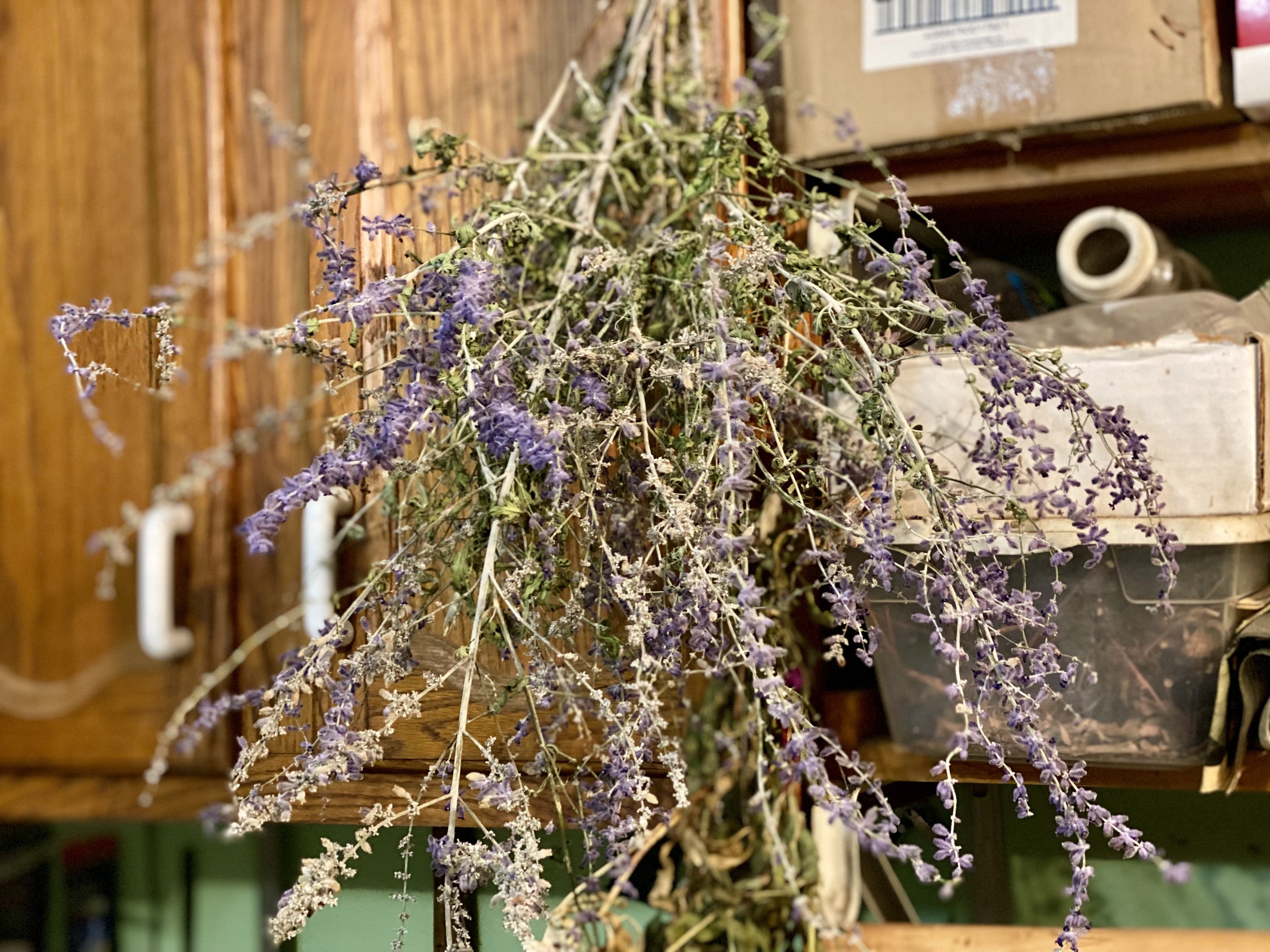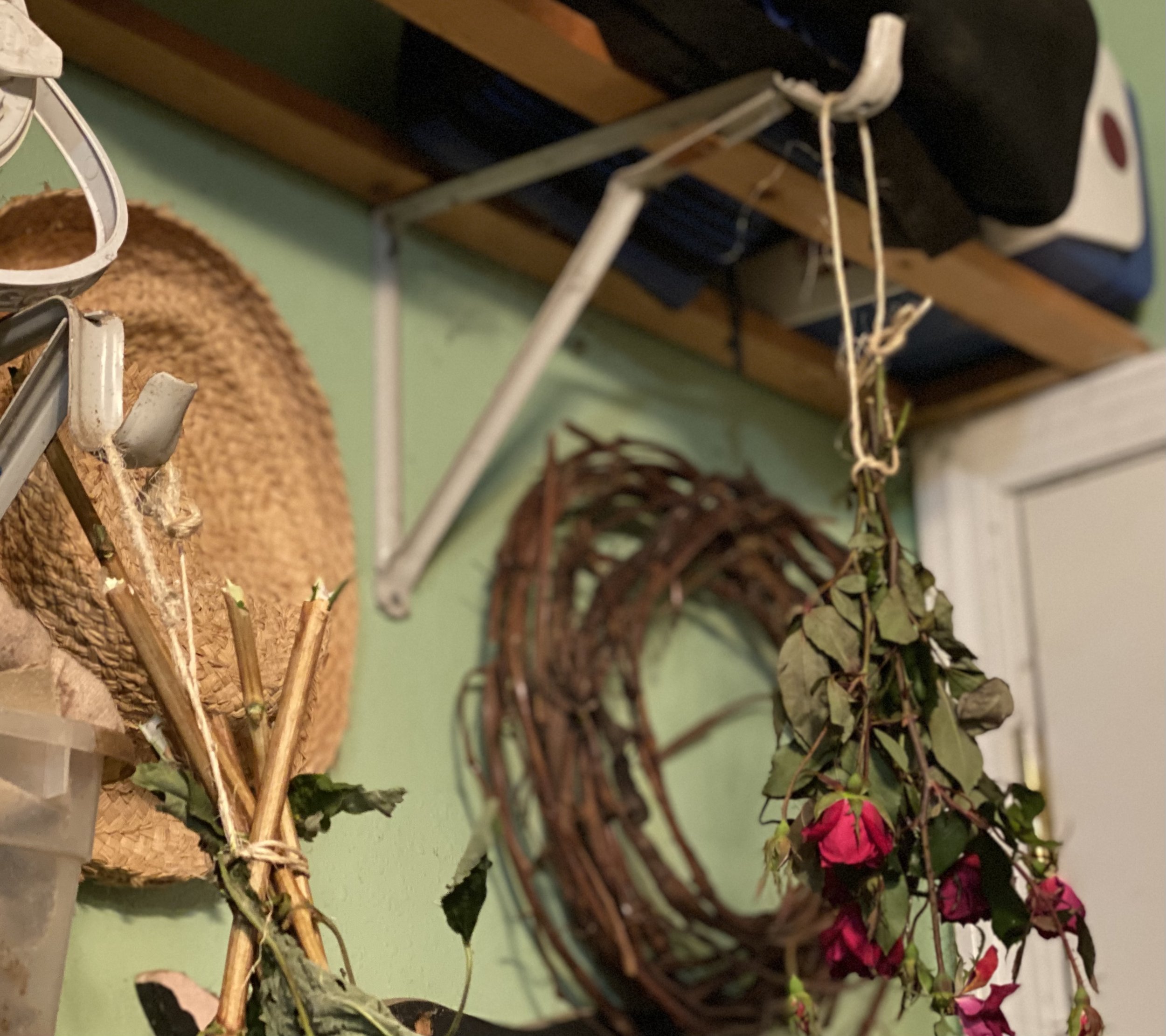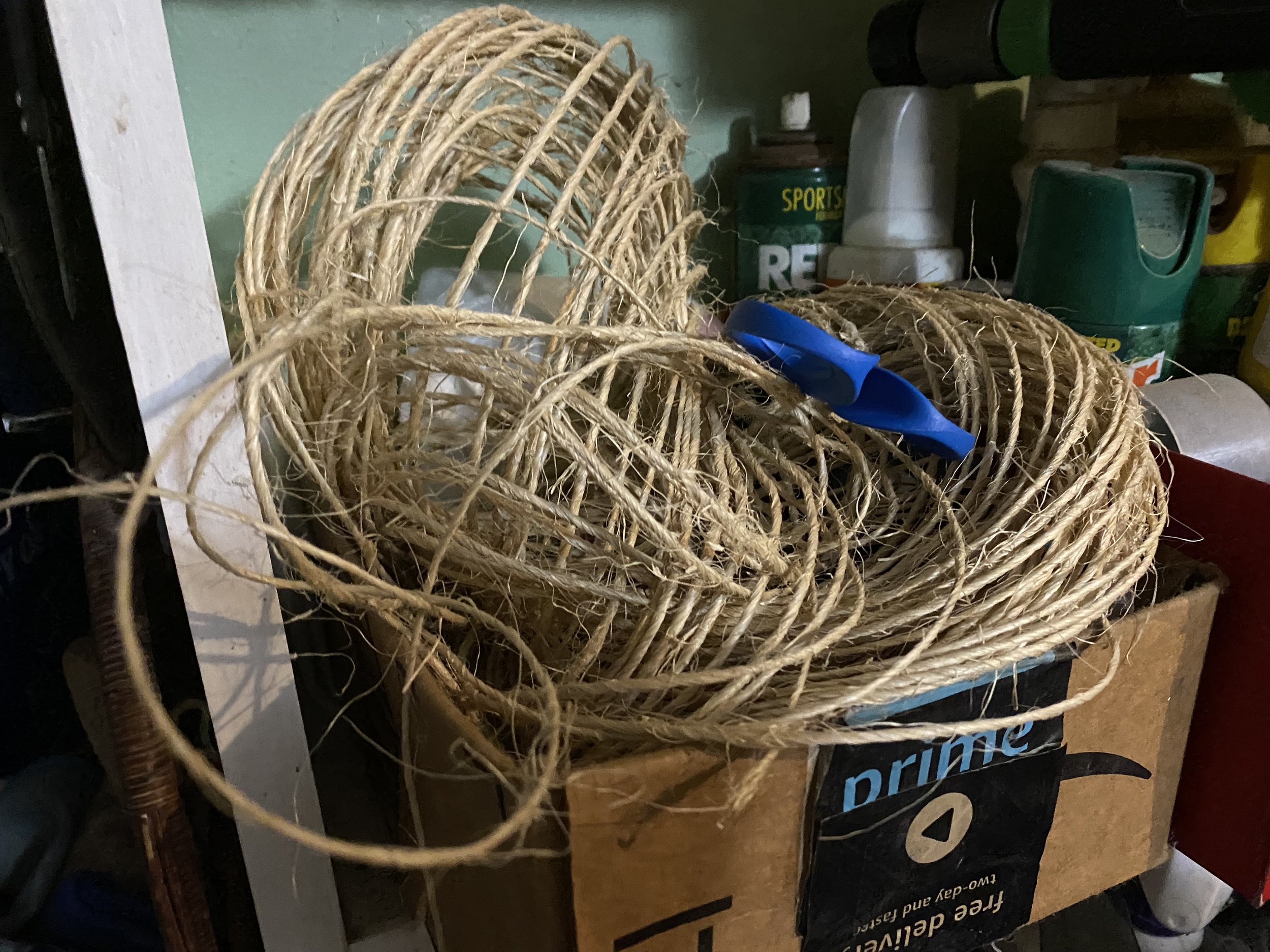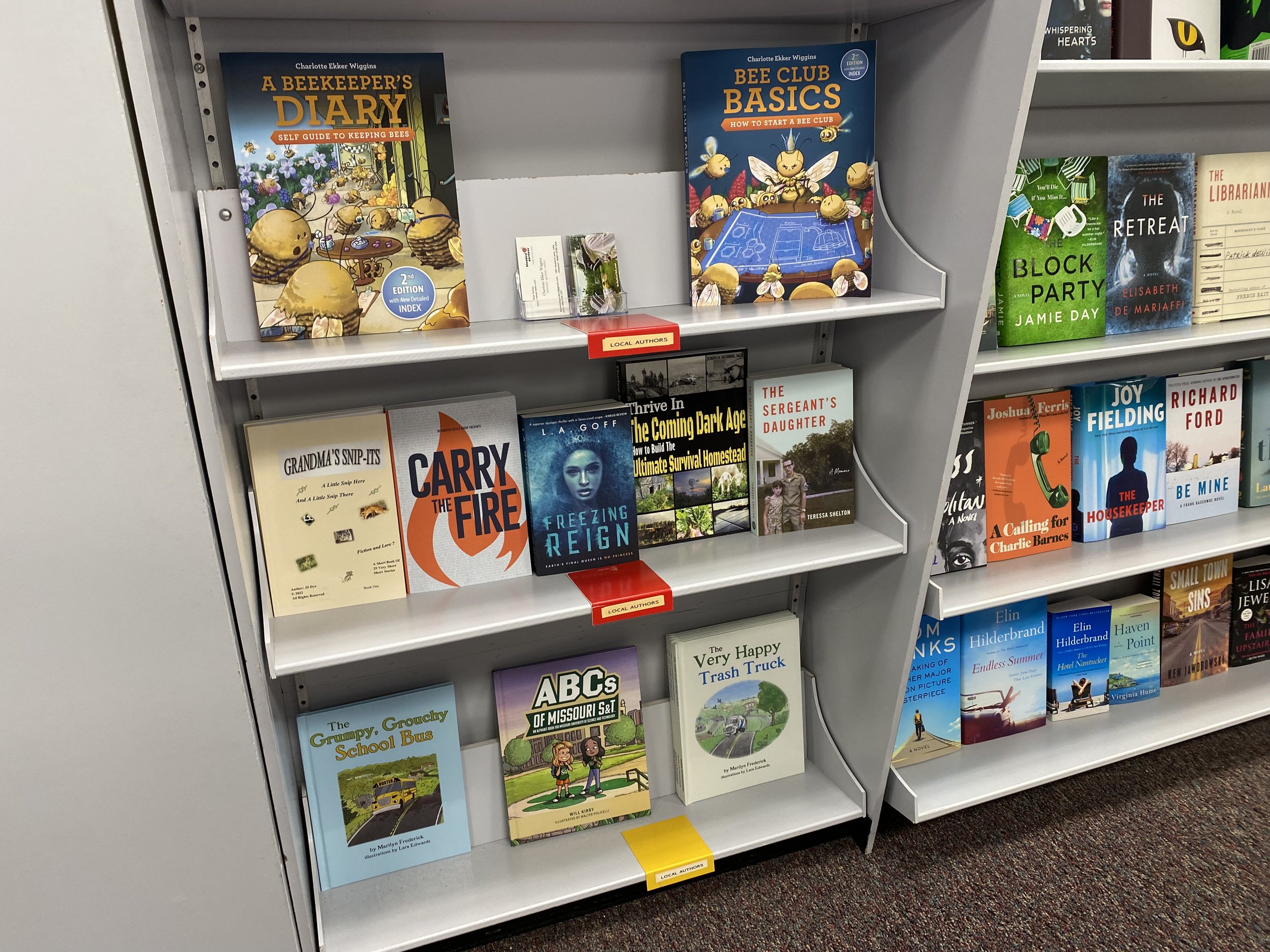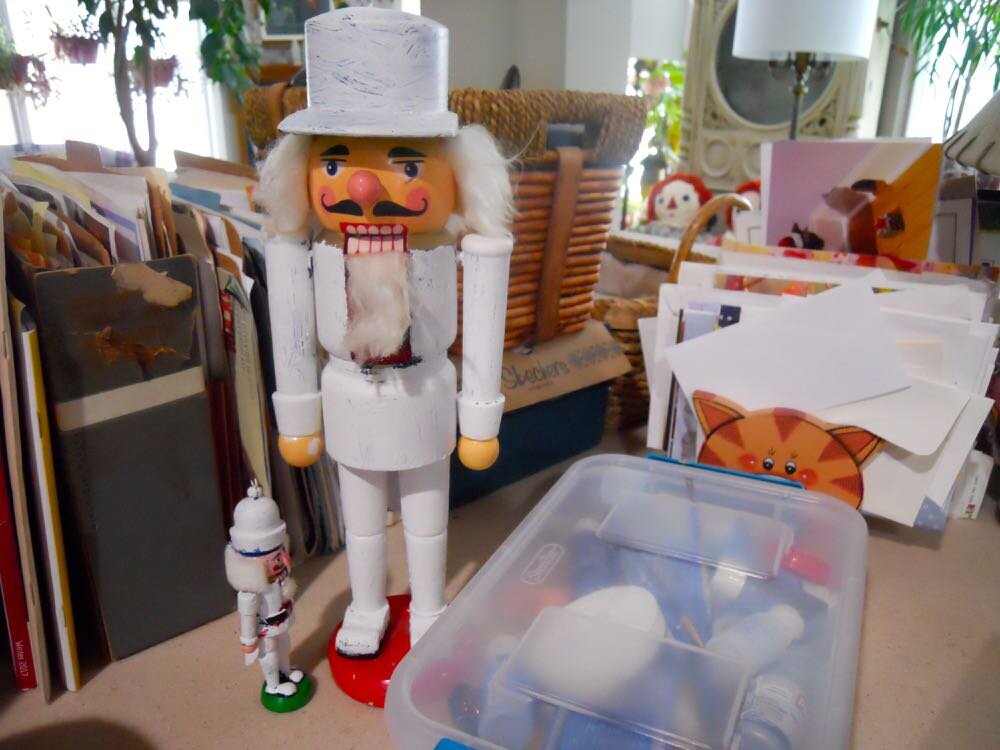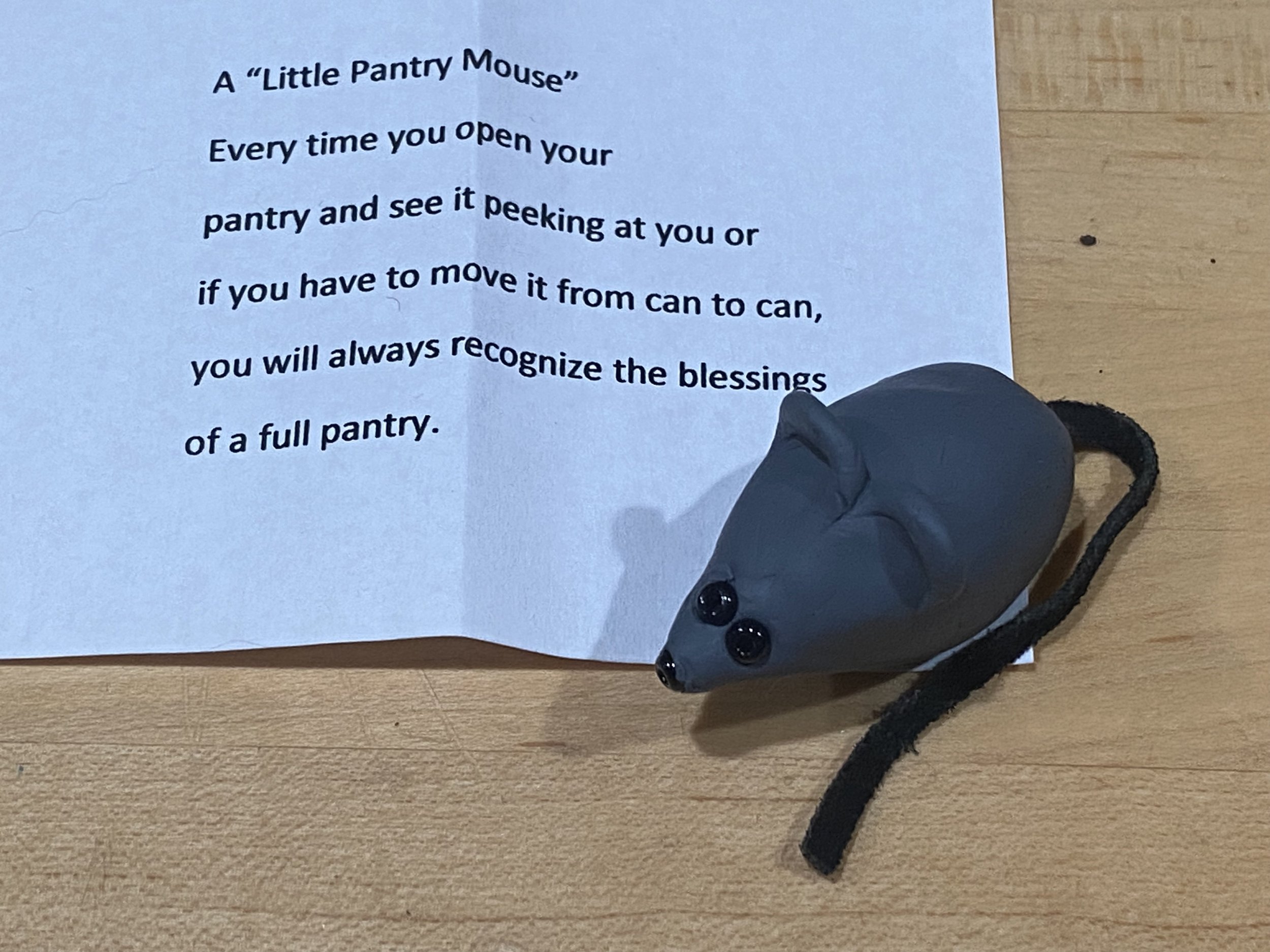Drying Flowers
/Russian sage, a favorite dried flower for wreaths, hanging up in my garage to dry. (Photo by Charlotte Ekker Wiggins)
Drying Flowers
Some of us may remember when wedding and dance bouquets were dried and saved under glass, either a dome or in a picture frame or shadow box. A friend of mine said she just goes to a hobby store and buys her dried flowers. Certainly an option but a lot more expensive than walking through your garden and gathering a few stems to dry.
Now for years I thought drying flowers was a complicated process. After I started, I found in general popular flowers can easily be dried for use in wreaths, bouquets and home decor including vases and baskets.
Start by looking at what flowers dry naturally still on the plant stem. Some will hold their shape; others may have pretty seed pods. It’s a great opportunity to leisurely walk through your garden and observe your plants at the various stages. I tend to leave seeds on the stem for birds and have found some interesting seed pod shapes once the seeds were consumed.
How to Cut Flowers for Drying
When cutting flowers to dry, cut long stems to they can easily be tied and hung to dry.
The shelf brackets with hooks can also hold paper towels. (Photo by Charlotte Ekker Wigigns)
I didn’t plan this when I was putting garage shelves in but they sure come in handy for flower drying. I have these metal shelf brackets that include a hook at the end. I have a round closet pole running through them on the bottom rung where I keep easy to reach paper towels and, right now, dried flowers hanging.
These shelf hooks make easy flower hanging spots. (Photo by Charlotte Ekker Wiggins)
Here’s another view of the metal shelf brackets with hooks on the end and two tied up drying flower bouquets.
Keep stems long so they can easily hang from the shelf brackets. (Photo by Charlotte Ekker Wiggins)
I first tie the end of the stems, then make a second loop with a bow tie that hangs from the hooks. If the flowers are heavy, I may do a double knot to keep them from falling.
To make it easier to dry flowers, I keep a ball of twine with scissors close to the hanging brackets. I like this twine because it easily dries if it comes in contact with wet stems.
Keep a ball of twine and scissors handy. (Photo by Charlotte Ekker Wiggins)
Once dry, I spray with a clear coat of polyurethane outside and let dry before I bring them in to help preserve them. I can remember my mother using hair spray before polyurethane!
Over the growing season, I add dried flowers to this inside wreath hanging in my den. This year it has daffodils, roses, yarrow, sedum, balloon flowers, straw flowers, lavender, Russian sage and some dried seeds with an interesting shape.
Flowers that don’t dry well this way include marigolds, daisies and zinnias.
Every year the wreath looks a little different depending on what dried flowers I add.
Dried greenery and lavender decorate this grapevine and make a sweet welcome. (Photo by Charlotte Ekker Wiggins)
I don’t spray this wreath; it’s hanging on an inside wall without sun exposure so the dried flowers are protected from fading.
This wreath reminds me of the Vintage Knitted Flower Quilt where each block features a different flower.
Drying and preserving flowers from someone’s garden would make a sweet personalized gift!

